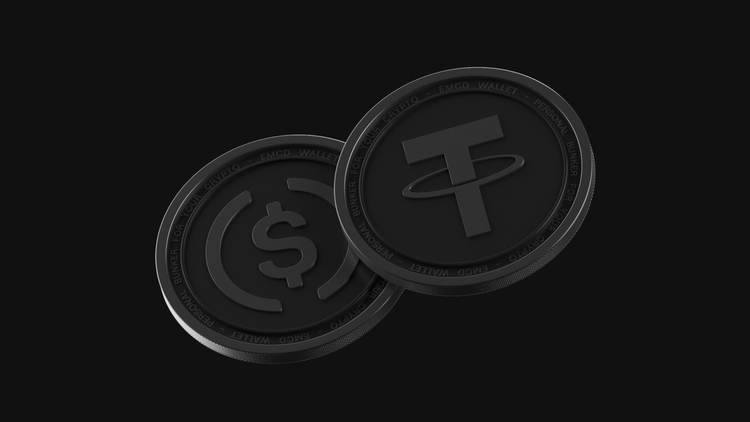What Is NFT: Definition, Examples, and Ways to Earn in This Field

NFT (non-fungible token) is a special type of digital token that is unique and non-interchangeable. Each NFT is tied to a specific digital object (image, video, music, 3D model, etc.) and cannot be replaced by another identical token. Unlike fungible cryptocurrencies such as Bitcoin or Ethereum, an NFT has no equivalent — every token is unique.
Because of this, NFTs are used to confirm the authenticity and ownership of digital objects: when a user purchases a token, they receive a ‘digital key to a unique asset. After buying an NFT, the purchaser is recognized as the owner of the corresponding digital object and gains certain rights over it.
- Right to use the object. Purchasing an NFT does not automatically grant copyright or broad usage rights. What the buyer actually gets depends on the smart contract or a separate license — in most cases the token grants ownership of the token itself and the right to transfer or resell it, while reproduction, commercial exploitation or exclusive usage rights are only granted if explicitly stated
- Ownership of copyrights (if provided). In most cases, the token itself does not automatically transfer all rights to the content but can specify permissions for use or distribution (for example, in the form of a license)
- Resale or transfer of the token. The owner can list the NFT for sale or give it to another person, while the digital object itself remains the same
Thus, an NFT acts as a kind of decentralized ledger (on the blockchain) that records ownership of a unique digital asset. The token holder receives a digital tag (an ID code) that proves authenticity and ownership history. Anyone can verify this information in a public ledger.
How NFTs Are Connected to Blockchain
NFTs are closely tied to blockchain technology — a distributed ledger that records all transactions. Each NFT is a cryptographic asset stored on the blockchain. Its smart contract (for example, under the ERC-721 or ERC-1155 standard on Ethereum) contains the token’s unique identifier and the owner’s address.
When a new token is created (minted), a transaction is added to the blockchain to record the issuance of the NFT. Data about the NFT (identifier, metadata, wallet address) becomes part of the public chain of blocks and cannot be altered retroactively. This immutability guarantees that the token cannot be forged or duplicated — changes in the blockchain are impossible without the private key of the owner.
The blockchain serves as a registry where all rights and operations with the token are stored. Any transfer of an NFT from one user to another is recorded as a transaction: the buyer sends cryptocurrency (e.g., ETH) to the smart contract’s address, and the contract moves the token to their wallet. This ensures transparency and security of NFT deals — every transaction is verifiable, and data storage is protected by cryptography.
How NFTs Work
An NFT is created with the help of a smart contract — a special program on the blockchain that defines the token’s logic. The smart contract specifies the rules for creating and transferring NFTs. For example, the ERC-721 standard (Ethereum) requires a separate contract for each type of token, while the more advanced ERC-1155 standard allows a single contract to manage multiple NFTs.
When creating an NFT, the developer chooses a platform and connects a crypto wallet. They then upload a file (image, video, music, etc.) and set the token’s parameters (name, description, attributes, author, possible royalty percentage, etc.). Once the creator presses ‘Mint’, the smart contract registers a new unique token: it generates an identifier linked to the specific digital object and assigns it to the creator’s wallet address. The token appears on the blockchain, while the associated digital file may be stored on decentralized storage (IPFS/Arweave) or an external server.
After minting, NFTs can be traded. The token is listed on a marketplace (NFT exchange), where the smart contract creates a sale (fixed price or auction). Any user can buy the NFT by sending cryptocurrency to the seller, and the smart contract automatically transfers the token to the new owner. Thanks to blockchain, the buyer receives proof of sole ownership — something not possible with ordinary digital files.
How NFTs Are Created
The general process for creating an NFT looks like this:
- Choosing a platform (marketplace). Popular NFT platforms include OpenSea, Rarible, Mintable, Binance NFT, Getgems (TON), and others. Each has its own fees and features. Many support ‘lazy minting’, where you upload your file and metadata but pay gas fees only when the token is sold. For example, after protocol improvements (e.g., EIP-4844 and wider Layer-2 adoption), minting costs on Ethereum have fallen; on many occasions in 2025 minting an NFT on Ethereum costs from a few cents to a few dollars, and on L2s (Polygon, Arbitrum, Optimism, Base) or TON it is often free or under $1. On Ethereum, minting costs depend on network load and can range from tens to hundreds of dollars
- Preparing the digital object. An NFT can represent any unique file: graphics, photos, animations, videos, audio, music tracks, 3D models, game items, collectible cards, etc. The key is having the rights to the content. You upload the file (or a storage link) and fill in attributes: name, description, traits, number of copies, and so on
- Connecting a wallet. To interact with an NFT platform, you need a crypto wallet — hot (software) or cold (hardware). Hot wallets (MetaMask, Trust Wallet, Binance Wallet) are free and convenient but less secure since they are always online. Hardware wallets (Ledger, Trezor) are offline and more secure. The private seed phrase must be stored securely, as losing it means losing access to your NFTs
- Setting NFT parameters. On the platform, after connecting a wallet, you click ‘Create NFT’. You upload the file, fill in details (name, description, category, number of copies, royalty fees, etc.), choose a blockchain (Ethereum, Polygon, Binance Smart Chain, TON), and confirm the minting transaction. A smart contract generates a unique token ID linked to your address
- Publishing and confirmation. After minting, a gas fee is charged, and the NFT appears in your profile. It can usually be previewed and edited before the first sale. Once ready, you can list it with a set price or put it up for auction
NFTs and Digital Assets
NFTs can represent almost any unique digital object. Common examples include digital art and collectibles. Artists create NFT paintings and animations (like Nyan Cat or Beeple’s works), musicians release music tracks or album covers, and game designers produce in-game items (weapons, skins, cards).
In metaverses, NFTs are used to own virtual property: land, buildings, clothing, or avatar accessories. For example, in Decentraland (Ethereum-based), users buy and sell NFT land plots, creating and developing virtual worlds. In The Sandbox, NFTs represent in-game scenarios and objects. Games like Axie Infinity let players earn cryptocurrency by breeding and trading NFT creatures.
Collectibles are another popular category: digital ‘cards featuring athletes or memes, limited NFT souvenirs from brands (Adidas, Nike), and vanity tokens for avatars. Almost any file can be tokenized, turning it into a high-value digital object. NFTs function as unique digital assets, supplementing or replacing physical certificates, tickets, diplomas, or licenses by authenticating content
NFT Market and Platforms
There are many NFT marketplaces — online platforms for creating, buying, and selling tokens. Major marketplaces in 2025 include OpenSea, Magic Eden (Solana, Ethereum, Bitcoin Ordinals), Blur (Ethereum trading), Foundation, Rarible, and Tensor (Solana); niche platforms like Getgems on TON are also growing. Some projects that attempted large marketplace moves earlier (for example, Coinbase NFT) scaled back or changed activity in recent years.
These platforms function as electronic auctions: creators upload NFTs, while buyers purchase them at fixed prices or via auctions. For example, OpenSea lists over a million NFTs across art, music, games, and collectibles. Rarible allows quick creation and listing, while others (Getgems on TON, Coinbase NFT, MagicEden on Solana) focus on specific blockchains.
The buying/selling process is handled through blockchain transactions. A buyer connects their wallet to the marketplace, selects a token, and pays with cryptocurrency (usually ETH on Ethereum). The smart contract automatically transfers the NFT to the buyer and sends the payment (minus platform fees) to the seller. Every deal is recorded in the blockchain, making ownership history public.
On many NFT platforms, you can also create your own tokens. Built-in minting tools let users upload content, set attributes and prices, and generate an NFT. Platforms like Binance NFT, OpenSea, and Rarible enable anyone to create collections and share them globally. They usually charge a small commission (2–5%) per sale.
Market dynamics: The NFT market peaked in 2021–early 2022 and then contracted significantly. Trading volumes in 2023–2024 dropped sharply from the 2021 highs (estimates show declines in the order of 80–90% from peak volumes). By 2025 the market is more specialized — active in gaming, brand integrations, collectibles and digital identity — but it is not the mass consumer hype of 2021. Many brands use NFTs for loyalty programs or gated access, and some countries and businesses run pilot projects for credentials and records.
Rights and Ownership
When buying an NFT, you do not automatically obtain all rights to the associated content. The NFT usually confirms ownership of the token itself (a blockchain certificate) and grants whatever permissions the smart contract or a separate license specifies. For example, buying an NFT image does not give you the right to copy, modify, or commercially exploit the picture unless this is explicitly stated. Sellers may allow personal use and resale but prohibit reproduction or adaptations.
Blockchain records contain the current owner and full transaction history. This acts as proof of ownership but does not override copyright law. If the tokenized object is copyrighted, rights remain with the creator (or license holder), regardless of the NFT.
In practice, NFT buyers receive:
- Certificate of uniqueness. You are registered as the official owner of a unique digital asset in the blockchain
- Right to manage the token. You can store it in your wallet, transfer it, or resell it on marketplaces
- Licenses (when included). Sometimes, NFTs come with usage rights defined by the seller or platform, but these are limited unless a full transfer of rights is specified
How to Use and Create NFTs
Creating an NFT (for beginners):
- Set up a crypto wallet (MetaMask, Trust Wallet, Binance Wallet, etc.) and purchase cryptocurrency (usually ETH or BNB)
- Register on an NFT marketplace
- Connect your wallet to the platform
- Upload your digital file, fill in token details, and click ‘Create’
- Confirm the transaction (pay the fee). The NFT appears in your collection, ready for sale or transfer
Buying NFTs: Log into a marketplace, connect your wallet, select a token, and click ‘Buy’. Enter the amount (usually in ETH), confirm the transaction, and the NFT is transferred to your blockchain address. Always check fees (gas) and platform terms before confirming. For beginners, starting on cheaper blockchains like Polygon or TON may be safer
Storing NFTs (wallets and security): NFTs live in your crypto wallet.
- Hot wallets (MetaMask, Trust Wallet, Coinbase Wallet, etc.) connect to the internet and are convenient for trading but more vulnerable if misused
- Hardware wallets (Ledger, Trezor) keep private keys offline and are considered more secure. They are recommended for larger collections. Always save your recovery phrase securely and avoid phishing websites
Development and Future of NFTs
NFTs are being rethought rather than simply dismissed as a fad. They remain useful in areas such as gaming, brand loyalty, identity, and digital collectibles, and pilots exist for diplomas, medical records, and access control. However, the mass consumer hype of 2021 has not returned; the space in 2025 is more specialized and pragmatic. Innovations include soulbound tokens (non-transferable identity-linked tokens), deeper metaverse integration, and AI-generated NFT content. Brands experiment with NFT-based perks and gated offers — for example, messaging apps and social platforms are testing NFT tools for gifts and verified digital items.
On forgery and scams: While a blockchain token itself cannot be retroactively altered or forged, fraud is common in practice: bad actors can mint NFTs using stolen images or fake metadata, create misleading collections, or list tokens that are not authorized by the original creator. Buyers must verify provenance and creator identity — ownership of the token does not guarantee authentic authorship of the underlying media.
FAQ
What does ’non-fungible’ mean?
It means the object is unique and cannot be replaced by an identical one. For example, $1 bills are fungible (each is equal), but NFTs are not — each has its own unique code.
How can I sell my NFT?
You can list it on any marketplace: log in, select the token, and click ‘Sell’. Set a price or auction terms, confirm the transaction in your wallet, and the NFT becomes available for purchase.
What risks come with buying NFTs?
The NFT market is volatile, with prices changing quickly. There are risks of fraud (phishing, fake listings), speculation, and high transaction fees. Also, purchasing an NFT does not give automatic rights to the content. Always check authenticity and terms before buying.
Can an NFT be faked?
The token record on-chain cannot be forged, but people can mint tokens with copied or stolen content. So while the blockchain entry is tamper-proof, provenance and authorship verification remain practical challenges.
How much does it cost to create an NFT?
It depends on the platform and network. Some blockchains (like Polygon or TON) allow free minting, with fees taken only upon sale. On Ethereum, you must pay gas fees, which can range from a few to several hundred dollars depending on network load. Marketplaces also take a commission (usually 2–5%). Overall, creating an NFT can cost anywhere from $0 to several hundred dollars.




